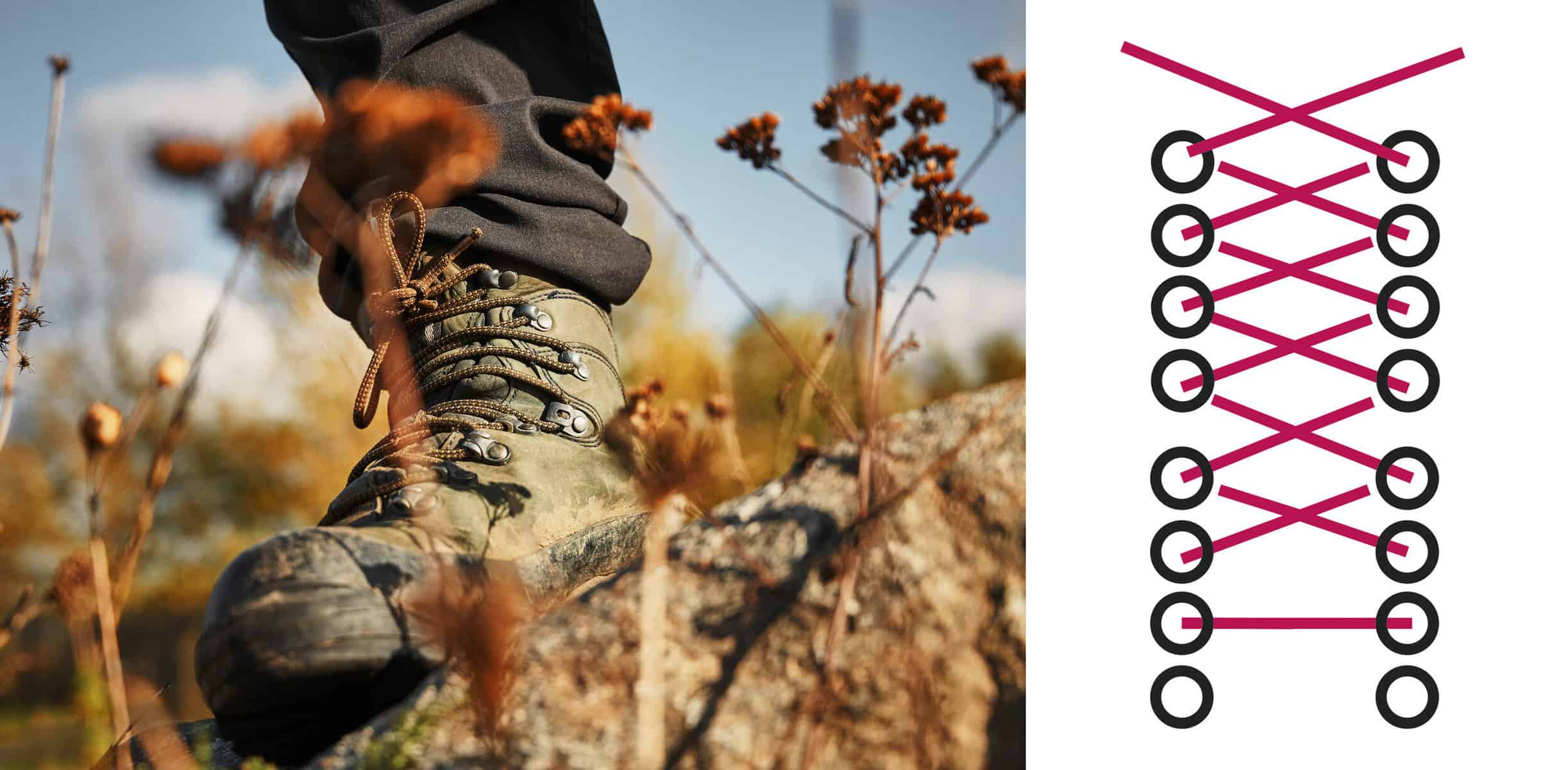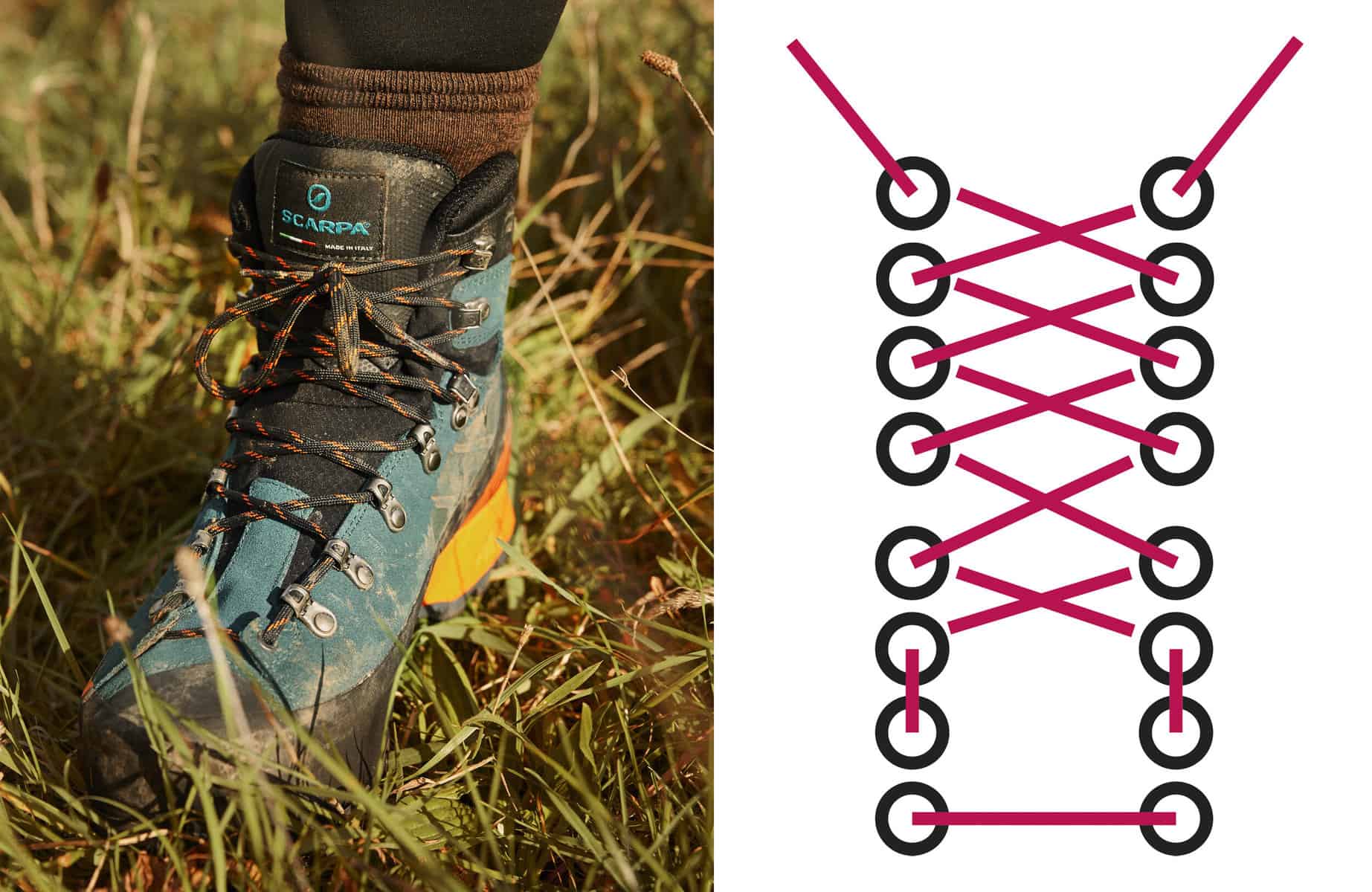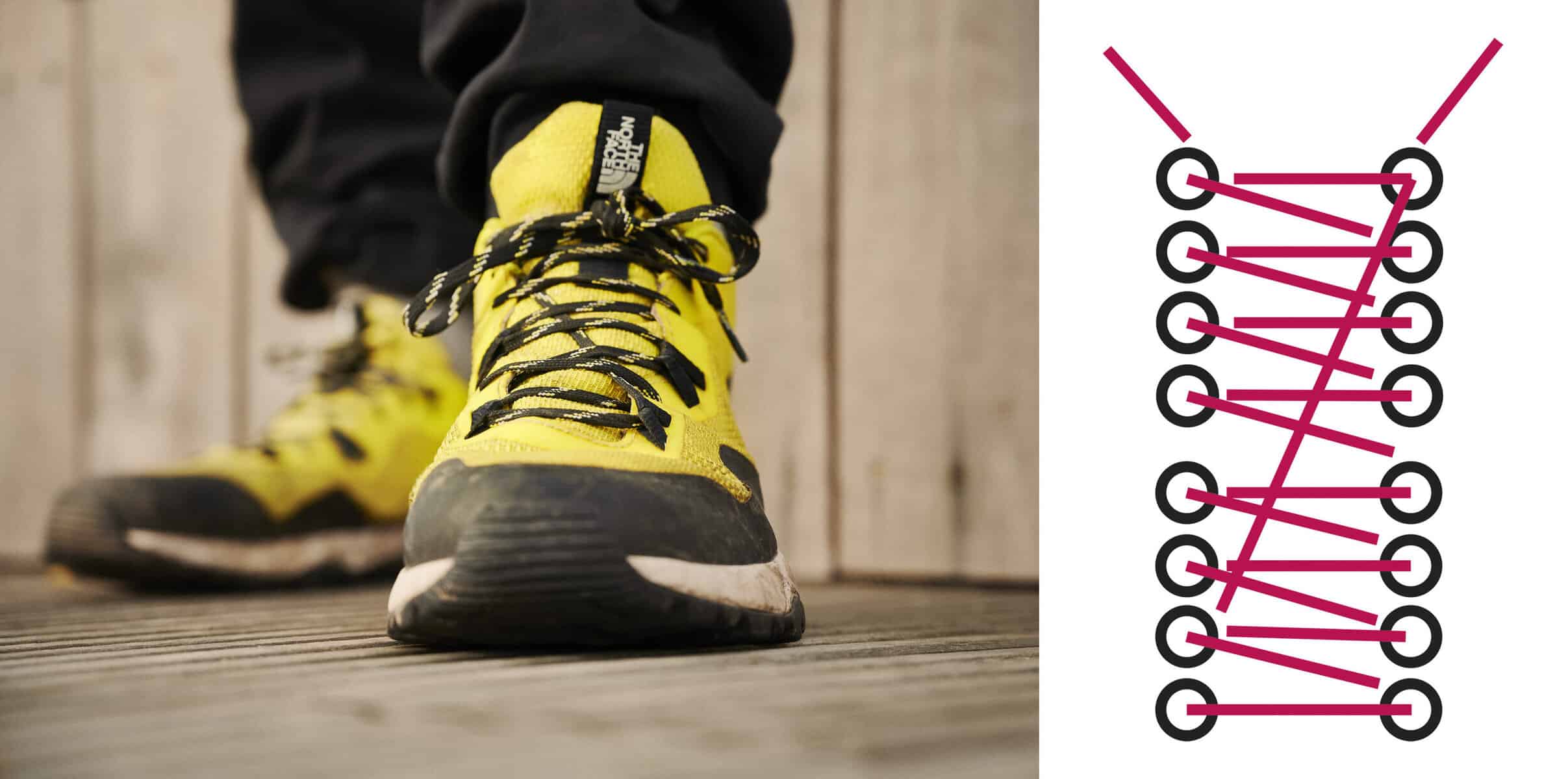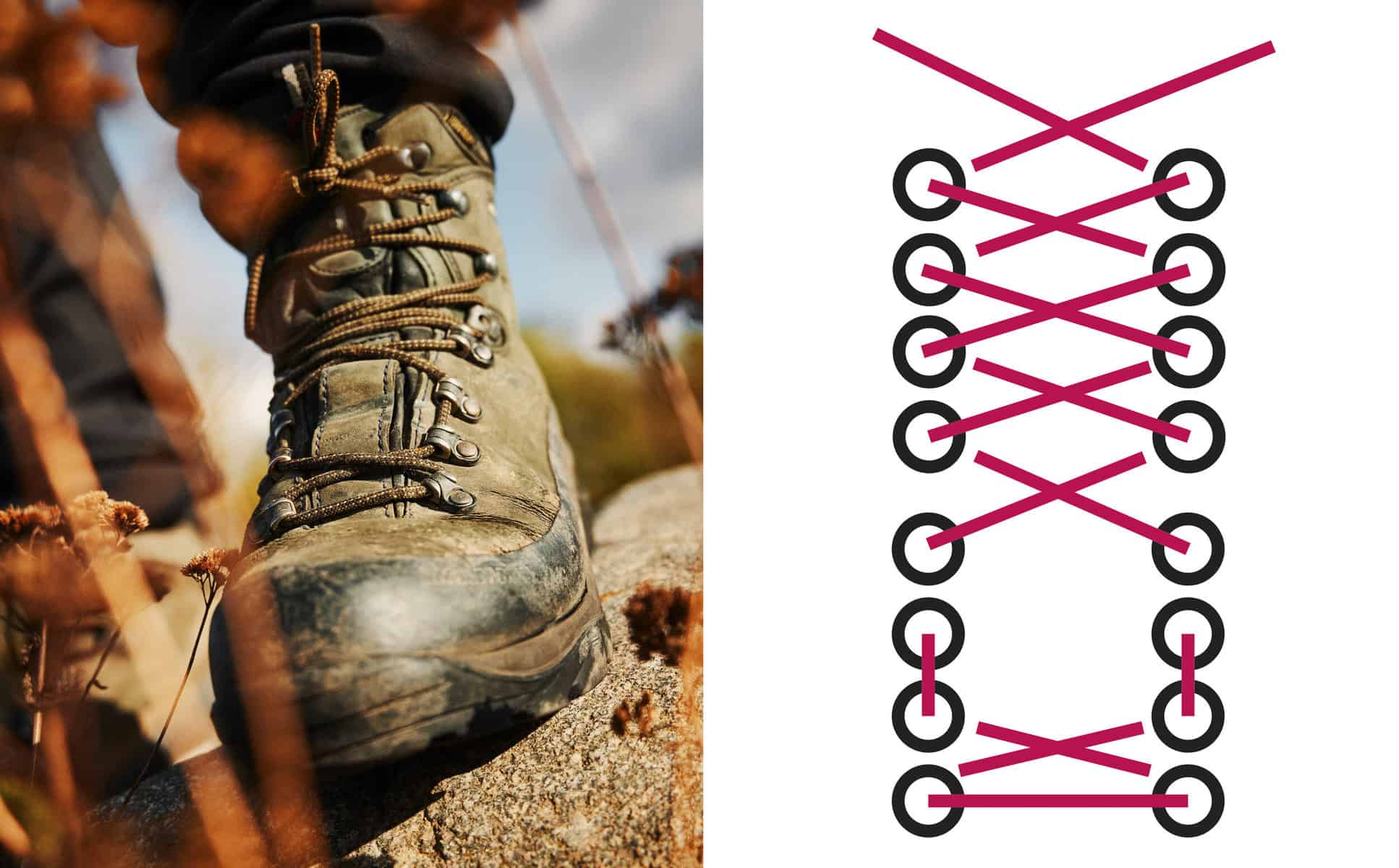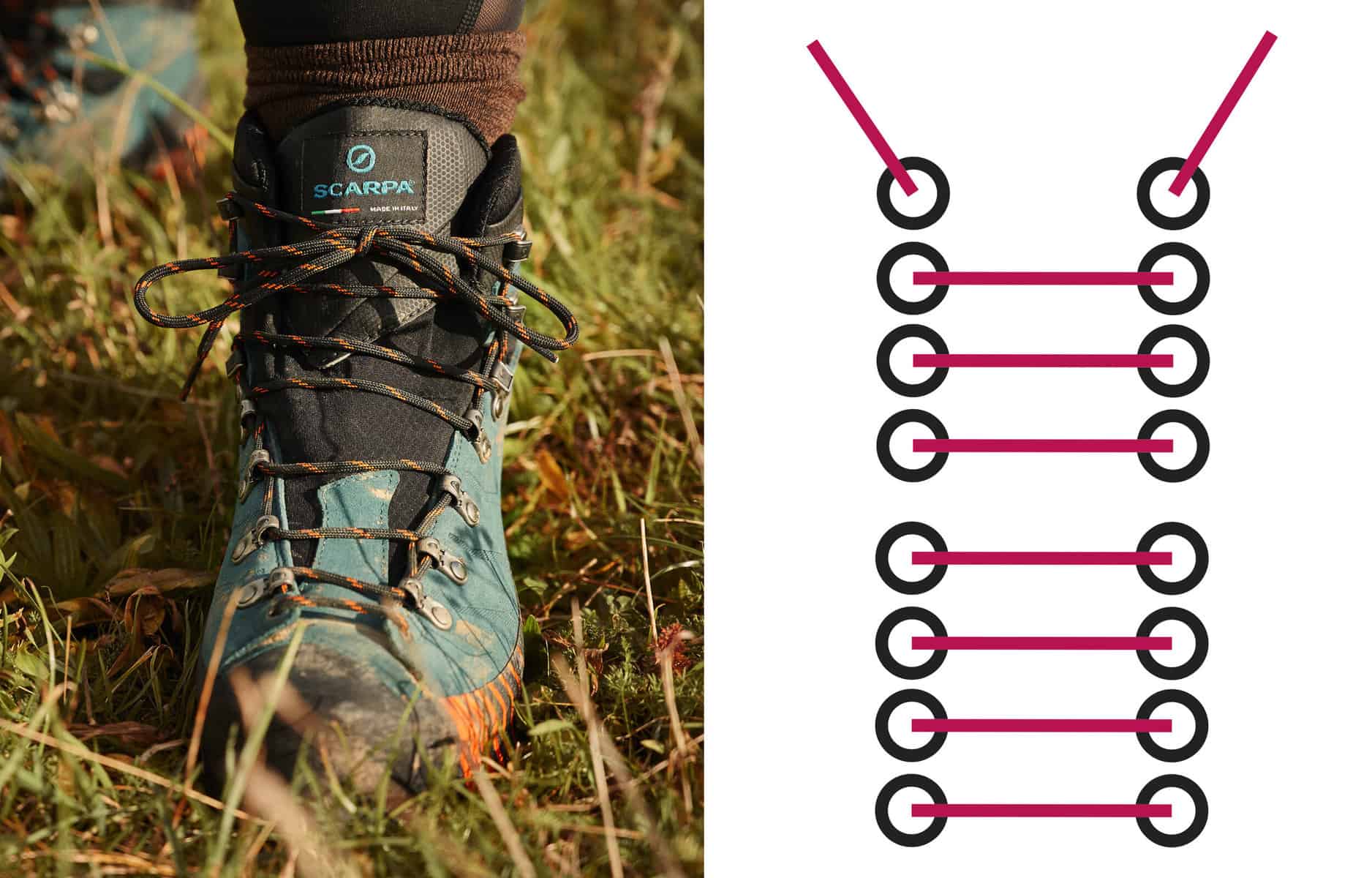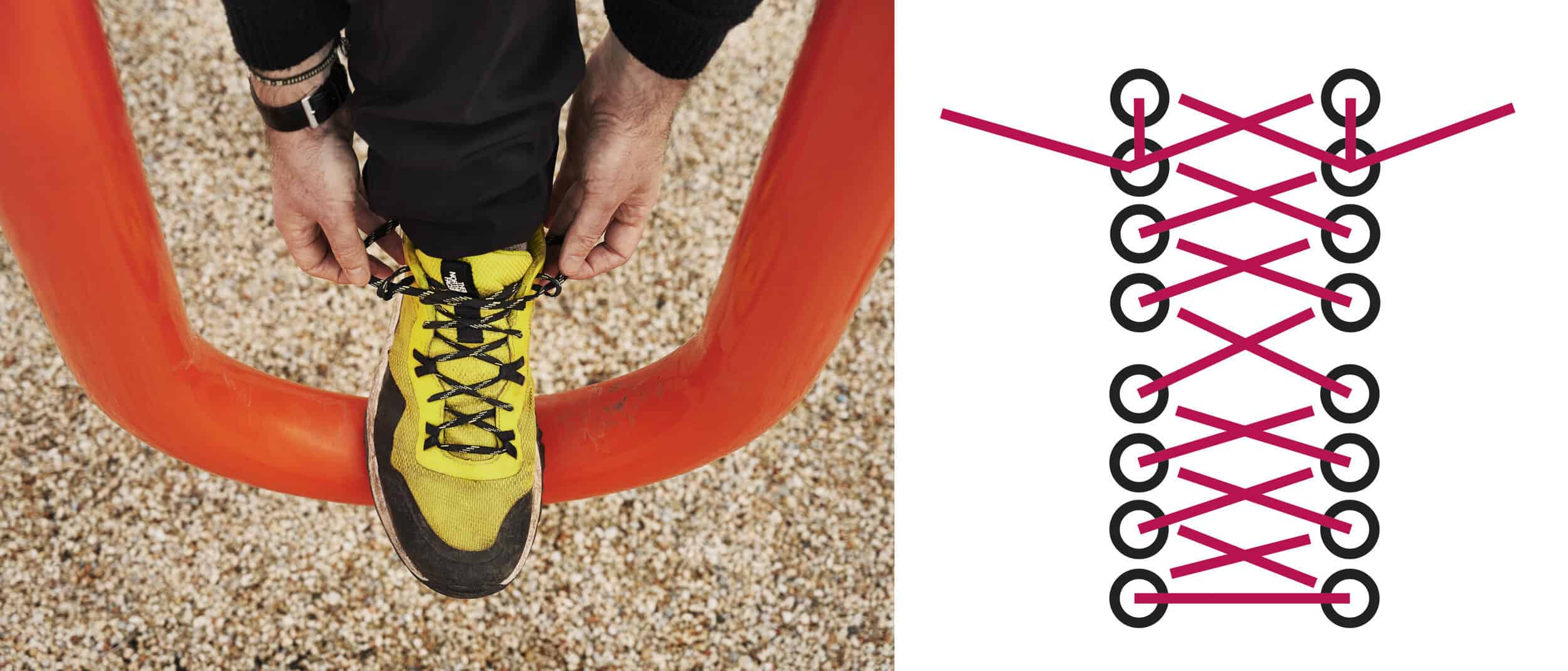I can certainly say, this isn’t the most exciting article I’ve ever written, but also incredibly important (and could potentially save you a lot of pain, misery and money). I can’t explain how much lacing up hiking shoes and boots for your particular foot type or problems you may have has become an obsession of mine over recent weeks. It started a while ago when it became really muddy in England and my faithful trail runners needed to be replaced with my waterproof boots. Having worn these boots for years now – tried, tested and faithful, I laced them up without a second thought for a long hike. However, by the end of the hike, I experienced something that I never had from these boots before – blisters so painful that I was practically hobbling. I was so relieved when we could see the car and I couldn’t wait for the hike to be over. As you can imagine, this didn’t fill me with an awful lot of joy and felt completely removed from how I feel about gear – that it is supposed to be there (as much as possible) as an enabling tool so that you can focus on what it is you’re doing rather than being in pain!
Thinking about this afterwards, a few things occurred to me. Due to the Covid-19 pandemic, 2020 has been a year of exploring mostly closer to home. I’ve worn my trail runners since March (you can tell) and I’ve been in love with how light they feel. My boots would usually be worn constantly as well throughout the year when we are up in the mountains because I get cold feet, they keep my ankles supported and they don’t allow you to feel every agonizing stone as you make your way up the trail. The relatively good weather we’ve had all year combined with the kind of trails we’d been doing has meant that I haven’t felt the need for them for this whole time. The other factor was that in February, on our last trip before lockdown in California, I got an ankle injury that subsequently needed physio. At the time, I was used to wearing boots and they seemed to keep it supported, but once I was back and wearing trail runners, it just didn’t happen. So, I started to wonder if this was also having something to do with the pain I was experiencing in my boots. The pain was not something I was used to and after further inspection on the boots, they seemed pretty much fine and the same as I remembered them.
A few weeks ago, I was out hiking with a good friend and I mentioned that I’d had this horrible experience with my boots, and I didn’t know what to do. She seemed surprised as she’d been experiencing similar kinds of things and mentioned how uncomfortable various people she was hiking with had been in their boots on a long distance trail she had recently completed. I started to think that there was something in this, so I began to research what could be done here and the internet threw me into a world of lacing patterns that I’d never even thought of.
I think there is absolutely some truth in your boots becoming more rigid when you don’t wear them for a while, or as much, like what may be the case in 2020, but I also believe it goes further than that. You see, most hiking boots seem to come laced in the same way – crisscrossed all the way to the top. After a lot of research, I found a number of lacing methods which I tried with mixed results. What I realised though is that lacing your shoes for the way your foot is or any foot problems can dramatically change a shoe or boot. It can be the difference between having an enjoyable experience or a painful one. Sometimes, even if you don’t think you have anything ‘wrong’ with the lacing on your shoes, relacing for your feet can make that marginal difference that actually transforms things (sometimes we don’t know there is a better option until we try it). What also occurred to me is just how far relacing can help you stretch a boot or shoe. If you’re trying to use a pair of boots that have been handed over to you or you’ve obtained second hand and they aren’t just quite the right fit but you don’t really have another option – a new lacing pattern can seriously transform them into a ‘new’ feeling boot. It just isn’t always possible to spend a lot of money on shoes. If you’ve had an injury or change in the way your feet seem to feel or are just trying to stretch out the lifecycle of some shoes, it can also make such a difference. For me, the moment I relaced for my particular foot problem, it really changed the boots that I felt like I’d need to give up on. Now they feel comfortable and I’ve worn them for long hikes since with no discomfort at all. One of the things that really brought home to me just how much lacing can change the feel of your shoes was when we were shooting the images for this article. As we walked, I had one boot laced in the pattern that suits my feet and the other in a completely different way – they couldn’t have felt more different and it almost felt like I was wearing two completely different shoes.
So, after careful collation and a lot of research, I’ve been able to narrow down a list of six lacing patterns that I think generally cover a lot of bases when it comes to common foot problems. If you’re thinking ‘I don’t have a foot problem’, this also covers different foot structures – so if you have a wide forefoot or high arches there are many methods to creating a perfect fit shoe with the ones you already have here. Don’t know what foot type suits you best? Try out a few lacing patterns and go for a quick walk (not too far to avoid any problems if you don’t have the right lacing for you figured out) to work out what is best for you.
I can guarantee, relacing for your feet will revolutionise your shoes and you’ll enjoy wearing them more!
Here are the six lacing patterns to try…
Relieving Toe Box Pressure
Scenario: Your toes feel numb or ‘cut off’ in your shoe. You get pain in your toes after wearing them.Solution: No toe lacing – this pattern removes lacing up the first eye, so your feet have more room to move and wiggle around at the front of your shoe whilst keeping the rest of your foot firmly secure.
Bunions or wide front of foot
Scenario: Your feet are wider at the front (near your toes) than shoes usually give allowances for. This is particularly a problem for me – and for people with relatively small feet as if you size up, your boot or shoe can feel too loose. With standard lacing, this can give you blisters around your toes and also give you numb or even loss of sensation in your toes (not a good thing).
Solution: Leave space at the front of the shoe to increase forefront width whilst maintaining tension in the back.
Toe pain – or finding black toenails
Scenario: This may seem a similar problem to the two scenarios above, but from my research, there are so many minutely different problems that can come from toes and the front of the foot. If you find that your toes in particular hurt more or that you’ve even come back with a black toenail, try out this method.
Solution: Relieve pressure from the toes with ‘toe cap’ lacing.
High arches
Scenario: You may find that the middle of your foot, both front and back are feeling restricted, a little numb or in pain. You may also find that if pain you’re experiencing in your toes isn’t solved by one of the other lacing patterns, the high arches lacing pattern is probably the one you need. What seems to happen is that if you have high arches, you can actually end up putting more pressure on your toes by the way you have to over compensate. High arches that are not laced for properly can also make sense of lower back or buttock pain.
Solution: Open up the middle of the shoe for more width and space to breathe with the gap lacing technique.
Wide feet
Scenario: It could be that shoes in general just feel quite tight for you, but that stepping up a size means that there is too much length in your shoes. This can lead to a feeling of numbness in your shoes and blisters.
Solution: Use bar lacing to loosen up the width of the shoe.
Heel slipping
Scenario: If the shoes you have are a little too big for you, or that you find your foot moves at the heel when you’re wearing them, it can lead to painful blisters in this really sensitive area.
Solution: Make the top of the shoe tighter with lock lacing. This lacing pattern is a little less easy to visualize with just a diagram, so I’ve included a link to a video that goes through the method in more detail here.

